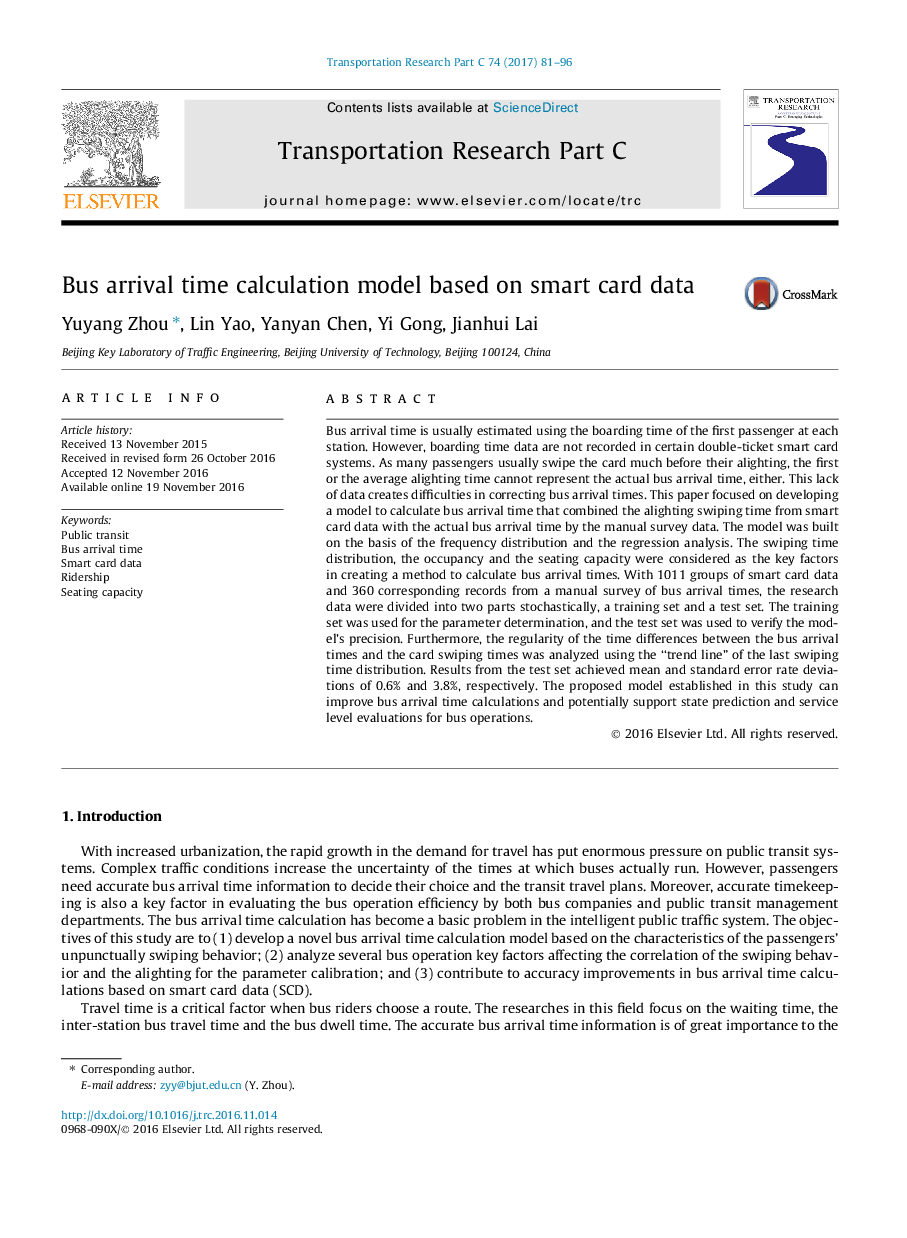| Article ID | Journal | Published Year | Pages | File Type |
|---|---|---|---|---|
| 4968579 | Transportation Research Part C: Emerging Technologies | 2017 | 16 Pages |
â¢Smart card and manual survey data are combined for bus arrival time calculation.â¢The ridership versus the seating capacity affects the riders' card swiping behaviors.â¢The trend of time gap between the card swiping and bus arrival time is portrayed.â¢Model validation shows only 0.6% and 3.8% of mean and standard error rate deviations.
Bus arrival time is usually estimated using the boarding time of the first passenger at each station. However, boarding time data are not recorded in certain double-ticket smart card systems. As many passengers usually swipe the card much before their alighting, the first or the average alighting time cannot represent the actual bus arrival time, either. This lack of data creates difficulties in correcting bus arrival times. This paper focused on developing a model to calculate bus arrival time that combined the alighting swiping time from smart card data with the actual bus arrival time by the manual survey data. The model was built on the basis of the frequency distribution and the regression analysis. The swiping time distribution, the occupancy and the seating capacity were considered as the key factors in creating a method to calculate bus arrival times. With 1011 groups of smart card data and 360 corresponding records from a manual survey of bus arrival times, the research data were divided into two parts stochastically, a training set and a test set. The training set was used for the parameter determination, and the test set was used to verify the model's precision. Furthermore, the regularity of the time differences between the bus arrival times and the card swiping times was analyzed using the “trend line” of the last swiping time distribution. Results from the test set achieved mean and standard error rate deviations of 0.6% and 3.8%, respectively. The proposed model established in this study can improve bus arrival time calculations and potentially support state prediction and service level evaluations for bus operations.
